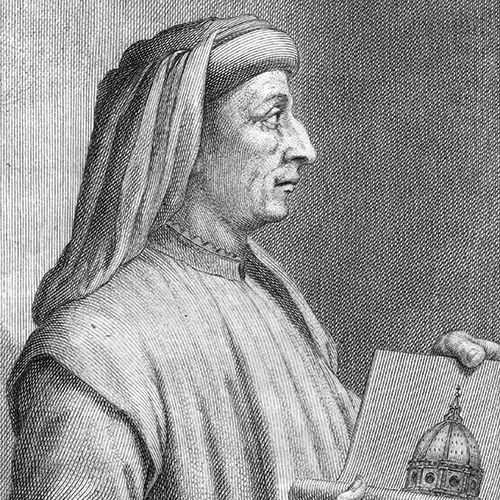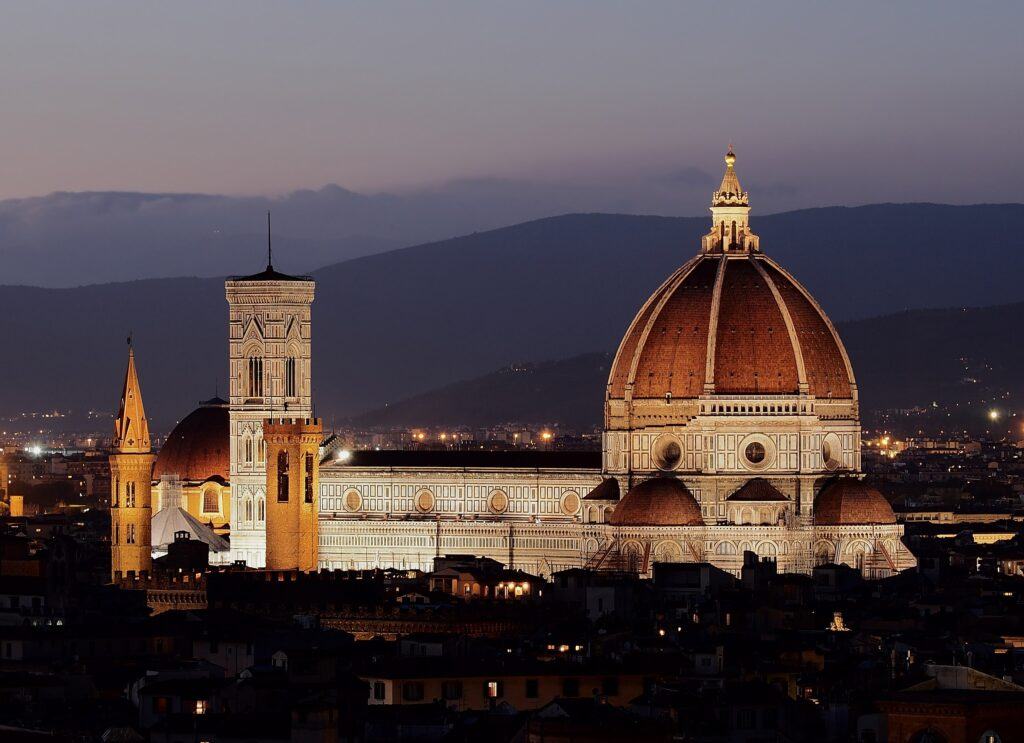What do Greg Gidez, Mark Shambaugh, G. William Quatman, David S. Crawford and Barbara Jackson have in common?

If you guessed they’re the most recent winners of the prestigious Brunelleschi Lifetime Achievement Award, congratulations – you know your DBIA award history! Still, you may know the names of those who’ve won DBIA’s highest honor, but how well do you know Filippo Brunelleschi or why the award bears his name?
Filippo di ser Brunellesco di Lippo Lapi – more commonly, Filippo Brunelleschi – was a Renaissance architect, engineer and sculptor perhaps best known for designing Il Duomo, the dome of Cattedrale di Santa Maria del Fiore in Florence (Florence Cathedral) in the 15th century. Typical of a Renaissance figure, he made his mark on more than just the famous Florentine dome. He was the first modern planner and sole construction supervisor, and he was a talented engineer. Brunelleschi filed the first industrial patent in 1421 for a crane system that moved Luna marble from the Carrara mountains to use in builds (Kwong, 2014). Additionally, he rediscovered the principles of linear perspective whereby designers could render the recession of space, with lines converging at a single fixed point in the distance.
Capo Maestro
Brunelleschi’s connection to design-build lies in how he integrated design and construction in his structures, reminiscent of the symbiotic relationship between the multiple functions of today’s design-build projects. Beard, Loulakis and Wundram (2001) explained that integration was not uncommon among ancient master builders like Brunelleschi and others like Ictinus and Callicrates of Ancient Greece and Abbé Suger of Gothic France. “Specialization would have been foreign to these design-builders,” the authors wrote, “It never occurred to these masters to consider one without the other” (p. 13).
While construction of the Florence Cathedral began at the end of the 13th century, arguments over how to construct a vault over the structure raged across generations of architects. In the 15th century, Brunelleschi was designated capo maestro (chief architect) of the dome and Santa Maria del Fiore first and foremost due to his expertise across disciplines – as an architect, an engineer and a builder.

However, the tale of how Brunelleschi was chosen to lead construction of Florence’s most recognizable structure is perhaps slightly more intriguing. Cathedral officials in 1418 commissioned a contest looking for architects, builders and engineers to design a device that could build a dome that addressed the cathedral’s complicated vault structure. To this point, the common knowledge was that a dome was impossible to build over the eight-sided vault.
“The almost impossibly ambitious plan that emerged in the mid-14th century called for a self-supporting dome as large as any ever constructed to span the space over the crossing of the nave and transept, which measured 42 meters in diameter. No one, however, including the designer who built a model of this proposed dome, knew how to build such a structure, particularly since flying buttresses (which recalled the Gothic style of some of Florence’s longstanding enemies in Northern Europe) were ruled out, and the standard method of internal scaffolding typically used during construction would require a prohibitive amount of timber” (Duncan, 2022).
Of several proposals submitted, Brunelleschi’s model was the most ambitious, drawing on a construction technique attributed to ancient Rome, in which “the dome could be constructed without the traditional armature, or wooden skeletal framework, by placing the brickwork in herringbone patterns between a framework of stone beams” (Hyman, 2023). Initially, the purveyors of the competition scoffed at Brunelleschi’s plan, “saying that his ideas were as mad as he was” (Beard, Loulakis, & Wundram, 2001, p. 17).
It wasn’t until Brunelleschi fully devised the method that would successfully vault the dome, designed the dome’s features and invented the machinery needed to construct it that he was awarded the project and work on the dome truly commenced. Brunelleschi was capo maestro of the project from 1420 through his death in 1446.
Filippo Brunelleschi’s accomplishments include much more than Il Duomo, from inventing the revolving crane from Leonardo da Vinci’s notebooks to pioneering the resurgence of linear perspective in art and design. In fact, it is generally recognized that Brunelleschi was instrumental in elevating the architect from a profession of manual labor to one of artistry (Duncan, 2022).
![Decorative quote: Leon Battista Alberti, a contemporary of Brunelleschi, said of Brunelleschi's work, "Who never so hard or so envious did not praise [Brunelleschi] the architect, seeing here a structure so great, soaring above the skies, ample enough to cover with its shadow all the Tuscan people" (translated from Italian, Venturi, 1923, p. 6).](https://dbia.org/wp-content/uploads/2023/05/Battista-Alberti-1024x324.png)
Honoring a Tradition of Excellence
The innovations he left as his legacy still influence the work of builders, architects and engineers today. Thus, in the tradition of this master builder, combining the design and construction of unique solutions to challenging projects, DBIA honors those who have spent their professional lives continuing that tradition. Originating in 2004, the Brunelleschi Lifetime Achievement Award recognizes those who unite innovation and creativity in design with the highest level of construction quality. Recipients of this award have exhibited originality, vision and breadth over at least 30 years of strong and well-documented commitment to design-build.
With an honor steeped in such historical excellence and tradition, the Brunelleschi Lifetime Achievement Award is a unique opportunity to showcase an outstanding individual who will join our impressive group of previous winners.
DBIA Executive Administrator Sara Shamaskin, who collects and manages the nomination submissions, said, “Every year, we look forward to the Brunelleschi Award because we get to simultaneously honor the legacy of the award’s namesake – one that helped design-build come to life – as well as recognize that the winners of the award may very well be a future generation’s Filippo Brunelleschi.”
***
Shamaskin added, “DBIA values the opportunity to marvel at and appreciate the decades of accomplishments and accolades that our nominees possess, adding value and experience to our organization.” Join us in marveling at the Brunelleschi Lifetime Achievement Award winner when we honor them Thursday, Nov. 2, 2023, in National Harbor, MD, at DBIA’s Design-Build Conference & Expo evening awards program.
***
References
Beard, J. L., Loulakis, M. C., & Wundram, E. C. (2001). Design build: Planning through development. McGraw-Hill.
Duncan, A. (2022, February 2). Filippo Brunelleschi paintings, bio, ideas. The Art Story. https://www.theartstory.org/artist/brunelleschi-filippo/
Hyman, I. (2023, April 11). Filippo Brunelleschi. Encyclopædia Britannica. https://www.britannica.com/biography/Filippo-Brunelleschi
Kwong, M. (2014, November 4). Six significant moments in patent history. Reuters. https://www.reuters.com/article/us-moments-patent-idUSKBN0IN1Y120141104
Venturi, A. (1923). Filippo Brunelleschi. Roma, Società Editrice d’arte illustrata. Translated from original Italian

